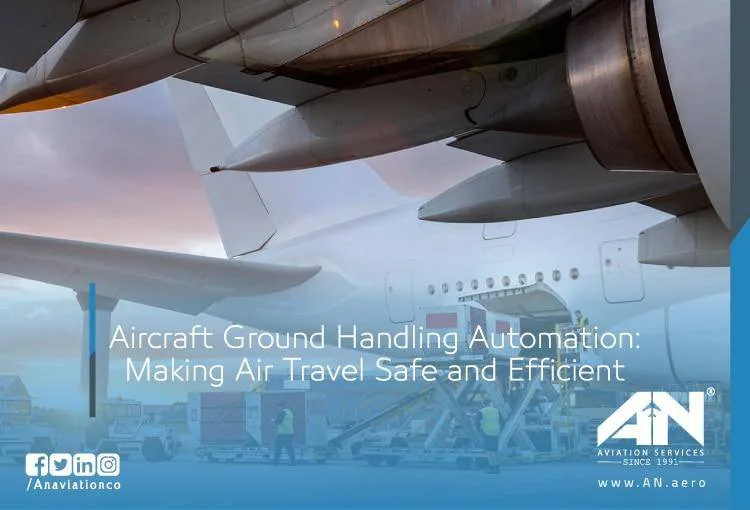
Air travel is a complex process involving numerous systems and processes. Aircraft ground handling is one of the most crucial parts of aviation travel. Aircraft ground handling encompasses all activities performed on the ground to prepare an aircraft for its next trip, including luggage and cargo loading and unloading, refueling, and cleaning.
These processes are critical to ensuring air transport safety and efficiency. However, they can be time-consuming and labor-intensive, which is why there is an increasing demand for aircraft ground handling automation.
variety of Operations That Involve Automation
Excess Baggage Security Screening Process Automation: The security screening process is one of the most time-consuming components of aircraft ground handling. With the growing number of passengers and the requirement for increased security, automating the security screening procedure would greatly reduce the time and effort required to check travelers and their bags.
Air traffic control is a key part of air travel that requires highly skilled professionals. The industry can eliminate the need for human intervention while increasing the accuracy and efficiency of air traffic control operations by digitizing air traffic control.
Ground Handling using Robot Karts: Ground handlers are often called upon to transport heavy equipment and cargo around the airport. Ground handlers can reduce physical strain and boost efficiency by deploying robot karts or autonomous cars.
AI Informs Runway Removal of Foreign Object Debris: Foreign object debris (FOD) can pose a substantial safety risk to airplanes. Airports can detect and identify FOD on runways, taxiways, and other airport facilities using artificial intelligence (AI). This technology can assist ground handlers in swiftly and efficiently removing debris, lowering the danger of aircraft damage and maintaining safe operations.
Delivering Value Drones for Bird Control and Logistics: Drones have a wide range of applications, including bird control, logistics, and inspection. Airports can reduce the time and effort required for these jobs while enhancing accuracy and efficiency by deploying drones.
Challenges Faced by Ground Handlers and the Potential for Automation
Ground handlers confront various hurdles in their jobs, including physical demands, the necessity to work in all weather situations, and the high danger of injury and accidents.
By taking control, automation can help lessen these dangers. duties that are repetitive, time-consuming, or physically demanding. Furthermore, automation can increase the precision and efficiency of ground-handling activities, lowering the risk of errors and delays.
The Advantages of Aircraft Ground Handling Automation
The aviation sector benefits from aircraft ground handling automation in a variety of ways, including:
Increased safety:
Automation can reduce the risk of accidents and improve safety by taking over hazardous tasks or requiring high levels of precision.
Improved efficiency:
Automation can increase the speed and accuracy of ground handling operations, reducing delays and improving the overall efficiency of airport operations.
Cost savings:
Automation can reduce labor costs and increase productivity, ultimately leading to cost savings for airlines and airports.
Enhanced customer experience:
Automation can reduce wait times and improve the overall customer experience by speeding up the ground handling process.
Steps Towards Automation in Aircraft Ground Handling
The aviation industry is already implementing automation in various aspects of ground-handling operations. Some of the steps towards automation in aircraft ground handling include:
Developing state-of-the-art ground handling systems:
The industry is investing in developing automated systems, such as self-driving baggage carts and robotic cargo loaders, to reduce the need for human intervention.
Adopting industry standards:
The industry is working to establish industry standards for automated ground support equipment to ensure that these systems are safe, reliable, and meet regulatory requirements.
Training ground handlers:
As automation becomes more prevalent in the aviation industry, ground handlers will need to be trained to operate and maintain automated systems.
Implementing autonomous vehicles:
Autonomous vehicles, such as self-driving baggage carts, are becoming increasingly common in airports worldwide. These vehicles can transport baggage and cargo more efficiently and safely than traditional vehicles.
Conclusion
Automation of aircraft ground handling is a critical step toward making air travel safer and more efficient. The industry is already moving towards automation by developing cutting-edge ground-handling technologies, establishing industry standards, and deploying self-driving vehicles.
As automation advances, it will play an increasingly important role in the aviation industry, ensuring that air travel stays safe, dependable, and efficient.

